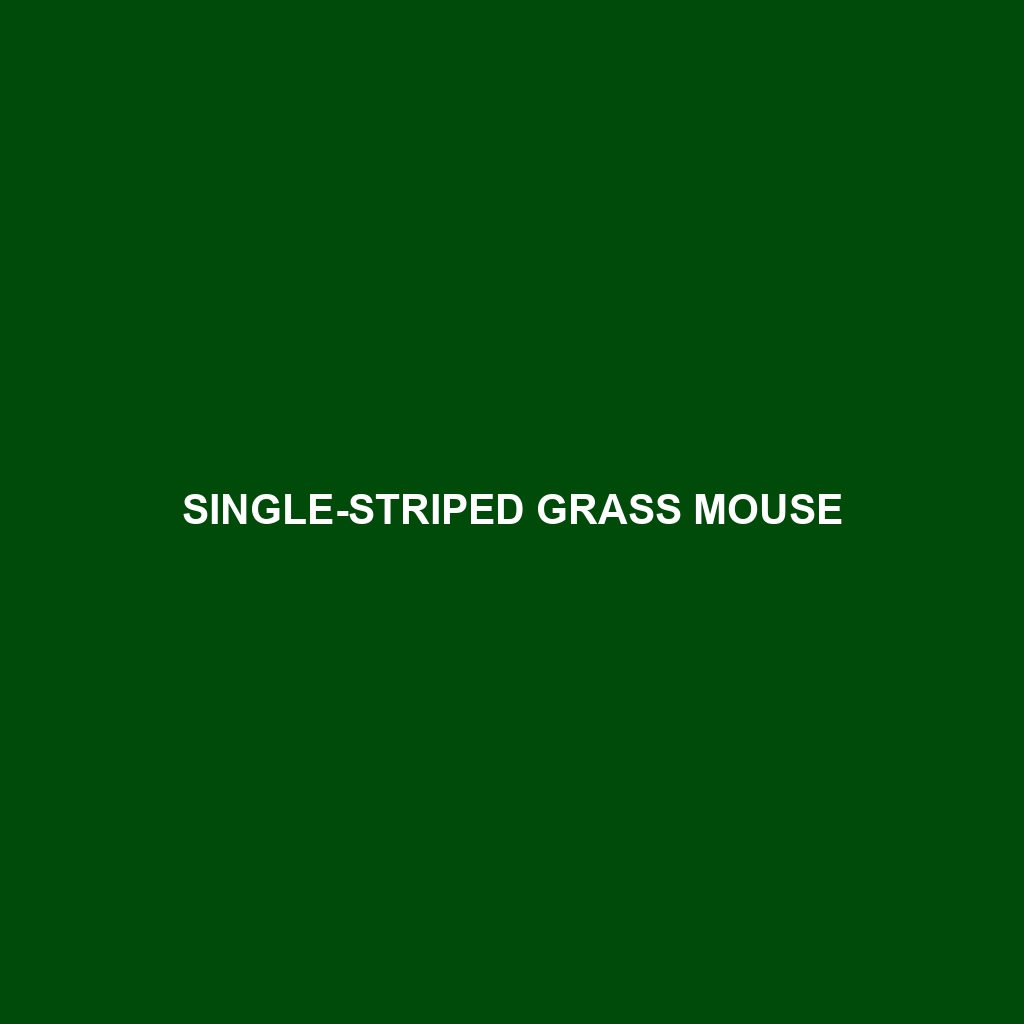Single-striped Grass Mouse
Common Name: Single-striped Grass Mouse
Scientific Name:
Habitat
The Single-striped Grass Mouse is primarily found in the grasslands and scrublands of southern Africa. This species thrives in dry savannas and open grass areas, favoring habitats that provide ample cover for foraging and nesting. Geographic locations include regions in Botswana, South Africa, and Namibia, where sandy soil and diverse vegetation allow for their unique ecological needs.
Physical Characteristics
This small rodent typically measures about 10 to 12 cm in body length, with a tail approximately the same length. The Single-striped Grass Mouse is characterized by its light brown fur, which is often streaked with darker shades. A distinguishing feature is the single dark stripe running along its back, providing effective camouflage against predators. Its large ears and long whiskers enhance its sensory perception, making it well adapted to its environment.
Behavior
The Single-striped Grass Mouse is predominantly nocturnal, engaging in foraging activities during the night to avoid daytime predators. It exhibits social behavior, often living in small family groups. Their burrowing habits are noteworthy, as they create elaborate tunnels that serve as both nests and storage sites for food. Additionally, they are known for their agility and quick movements, which help them escape threats.
Diet
The diet of the Single-striped Grass Mouse mainly consists of seeds, grains, and various types of plant matter. They are known to forage for food on the ground, often storing surplus items for later consumption. Their feeding habits contribute significantly to seed dispersal within their habitat, showcasing their role in maintaining ecological balance.
Reproduction
This species typically breeds year-round, with peak activity occurring during the rainy season when food resources are abundant. Female Single-striped Grass Mice give birth to litters of 3 to 6 young after a gestation period of approximately 21 days. The young are weaned after about three weeks and begin to forage independently shortly thereafter, which enhances their survival rates in their natural environments.
Conservation Status
The conservation status of the Single-striped Grass Mouse is currently classified as Least Concern by the International Union for Conservation of Nature (IUCN). However, habitat degradation due to agriculture and urban expansion poses potential risks to their populations, necessitating ongoing monitoring.
Interesting Facts
The Single-striped Grass Mouse is known for its impressive vocalizations that serve as communication amongst group members. Additionally, this species can be a key indicator of ecosystem health, as their presence often reflects the overall condition of grassland habitats.
Role in Ecosystem
As a seed disperser, the Single-striped Grass Mouse plays a vital role in its ecosystem by promoting plant diversity and health. They are also a critical food source for various predators, including birds of prey and snakes, thereby contributing to the food web dynamics within their habitat.
